What is Tomesode and Why is it Used in Formal Ceremonies?
Discover the elegance and tradition of Japan’s most formal kimono for married women
Introduction: Kyoto, Kimonos, and Timeless Traditions
When people think of Kyoto, the image of elegant kimonos immediately comes to mind. Among the different types of kimono, one of the most sophisticated and formal is the tomesode. Recognized for its refined design and cultural symbolism, the tomesode is worn during important Japanese ceremonies, weddings, and official celebrations.
In this article, we will explore the meaning of tomesode, its historical background, how it is worn, and why it is so important in Kyoto’s cultural identity. For those visiting Kyoto, renting a kimono can be a wonderful way to connect with Japanese tradition. If you want to experience this firsthand, you can check our kimono rental services at All Photos Kyoto.
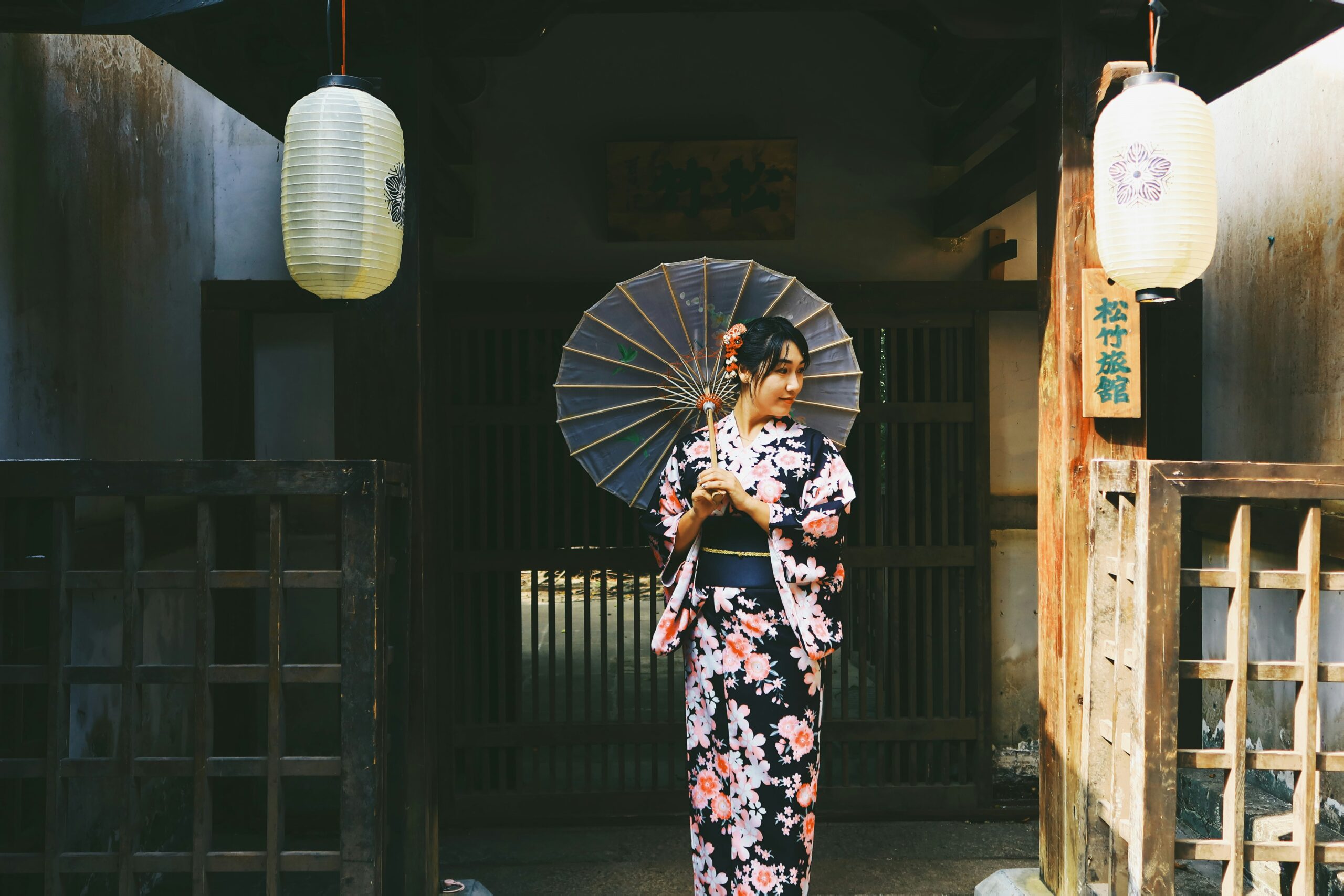
What is a Tomesode?
The tomesode (留袖) is a type of formal kimono traditionally worn by married women. It is characterized by:
- A black or colored base with elegant patterns only below the waist.
- The presence of family crests (kamon), usually five for maximum formality.
- Refined designs that symbolize good fortune, prosperity, or seasonal motifs.
The word tomesode itself means “shortened sleeve,” which refers to the fact that the long swinging sleeves of the furisode (worn by unmarried women) are cut shorter once a woman marries.
This kimono is considered the most formal garment a married woman can wear, especially in weddings, receptions, and official ceremonies.
History and Cultural Significance of Tomesode
The tomesode has roots in the Edo period (1603–1868), when fashion and formality became key aspects of Japanese clothing culture. Originally, the cutting of sleeves symbolized a woman’s transition from youth to married life.
In Kyoto, which was the cultural capital of Japan, tomesode designs often reflected nature, classical poetry, and aristocratic motifs. These kimono were not only fashion statements but also representations of social status and family heritage.
Today, wearing a tomesode continues to carry deep meaning: it is a way of honoring tradition, respecting the formality of an event, and expressing beauty through carefully chosen designs.
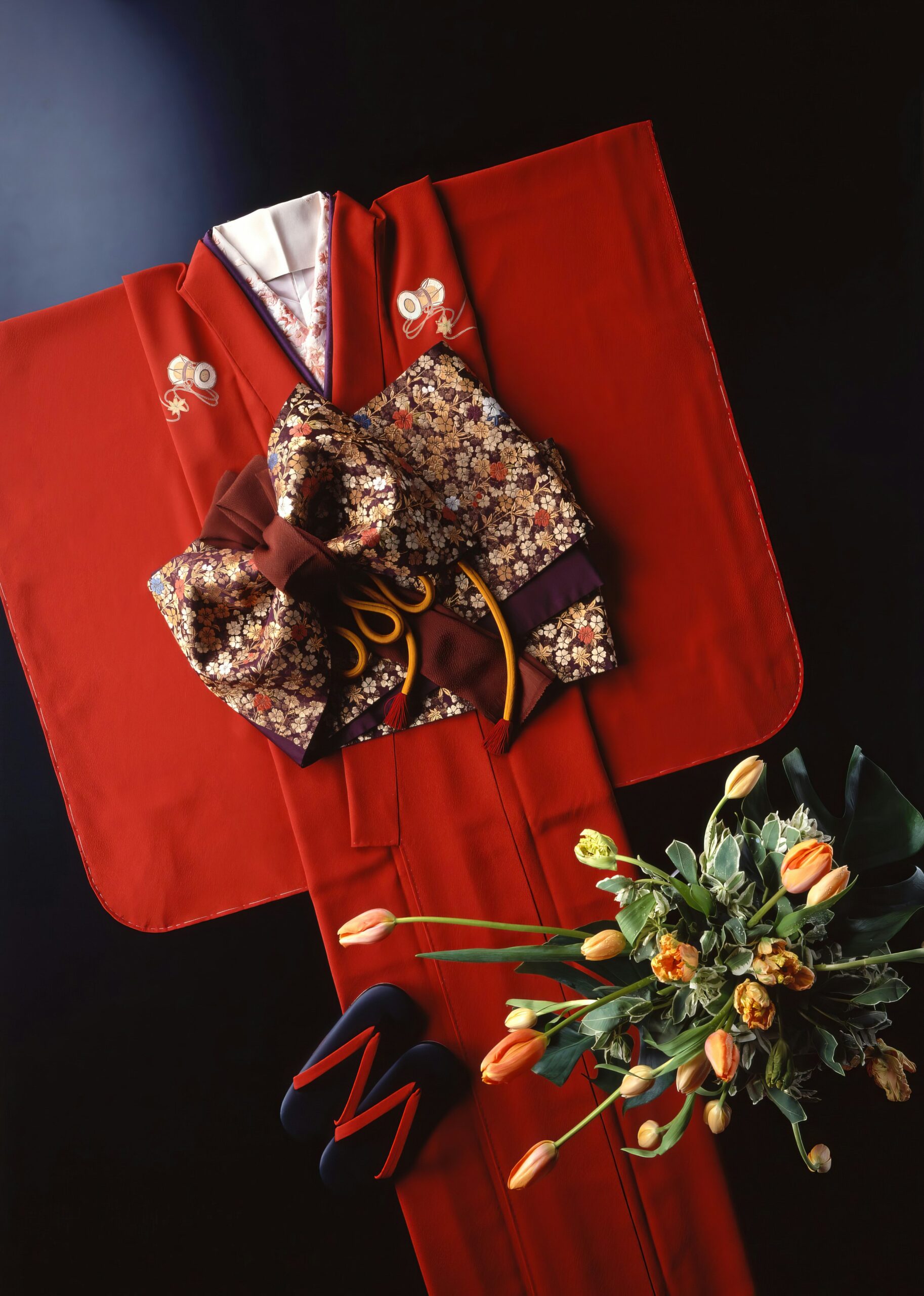
Types of Tomesode
There are two main types of tomesode:
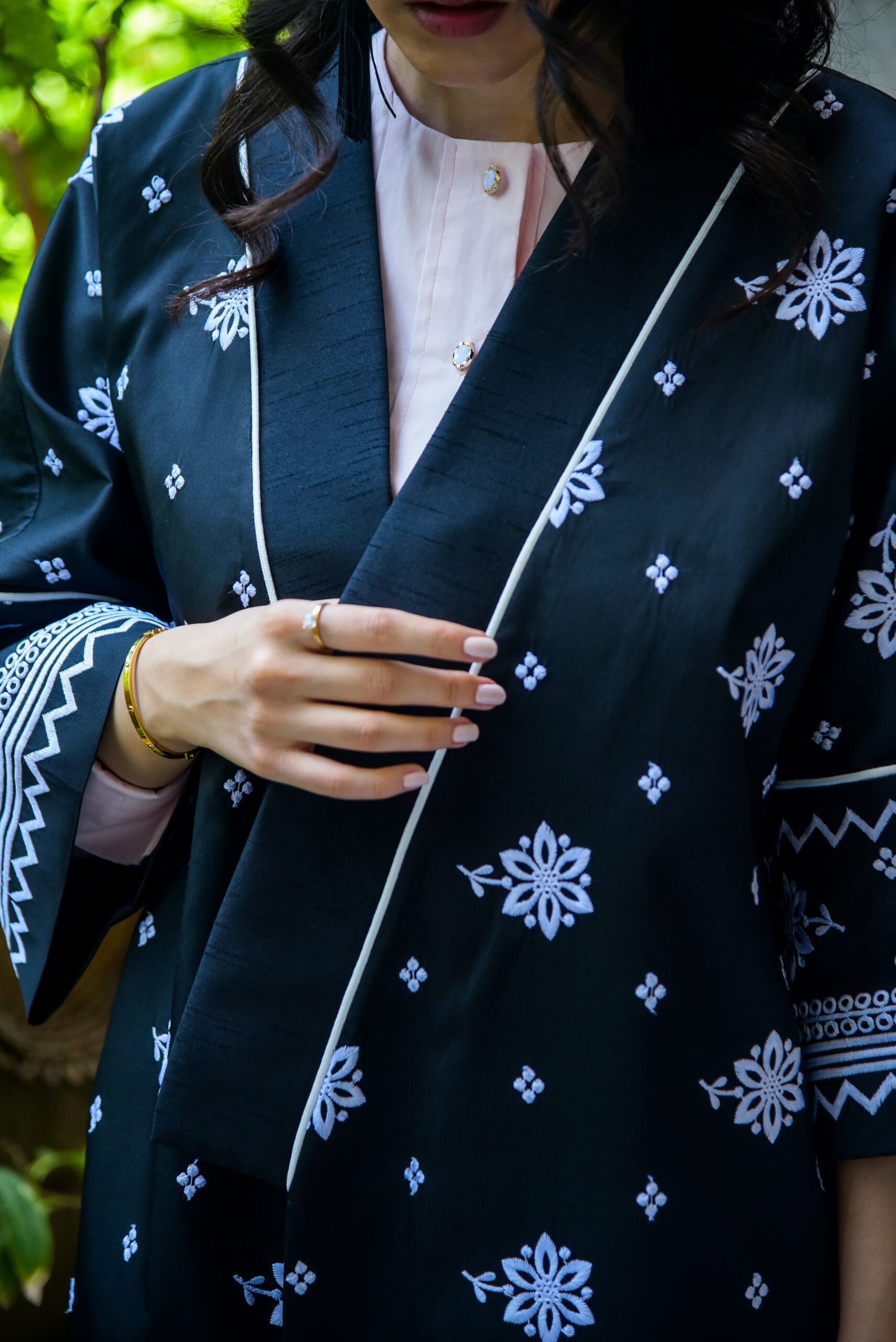
1. Kurotomesode (Black Tomesode)
- • Always black as the base color.
- • Worn by married women at weddings, especially by the mothers of the bride and groom.
- • Five white family crests are placed on the shoulders, chest, and back.
- • Designs are limited to below the waist.
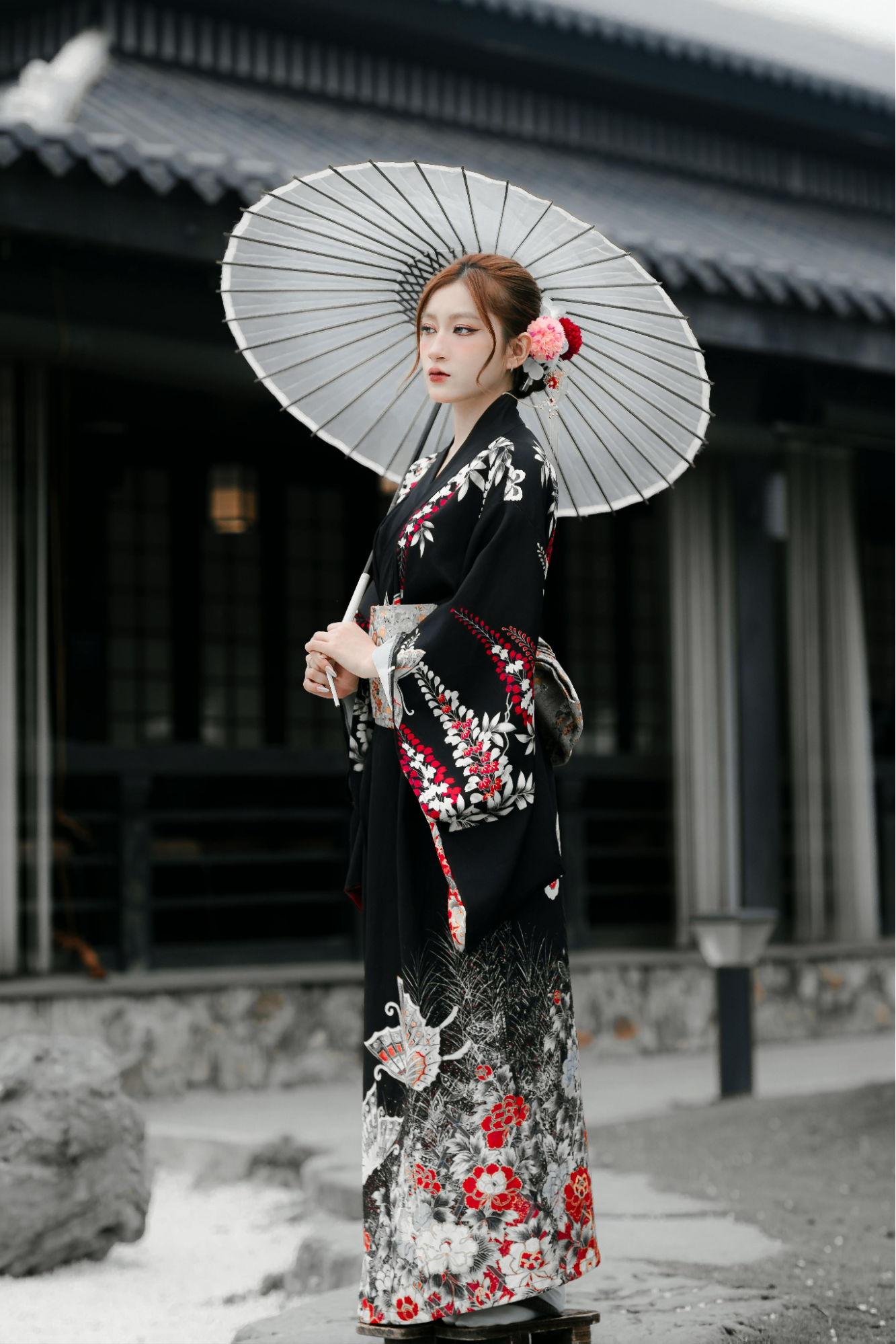
2. Irotomesode (Colored Tomesode)
- • Can be in soft colors such as pastel, gold, or light blue.
- • Usually has three or five family crests.
- • Worn at less formal ceremonies than kurotomesode, but still highly formal.
- • Appropriate for married women attending receptions, tea ceremonies, or official events.
Symbolism in Tomesode Patterns
Every tomesode carries symbols that represent wishes for happiness, wealth, and longevity. Common motifs include:
Cranes and turtles → Longevity and good fortune.
Pine, bamboo, and plum blossoms → Resilience, growth, and hope.
Waves and mountains → The eternal beauty of nature.
Gold embroidery → Prosperity and celebration.
These motifs make the tomesode not only a piece of clothing, but also a work of art full of cultural meaning.
How Tomesode is Worn
A tomesode is usually worn with:
- Obi (sash): A wide, decorative belt tied at the back.
- Obiage and obijime: Decorative cords and sashes that secure the obi.
- Tabi socks and zori sandals.
- Proper undergarments like the nagajuban (kimono under-robe).
The dressing process can take time and often requires the help of a professional. This is why kimono rental shops in Kyoto provide assistance to ensure the kimono is worn correctly and comfortably.
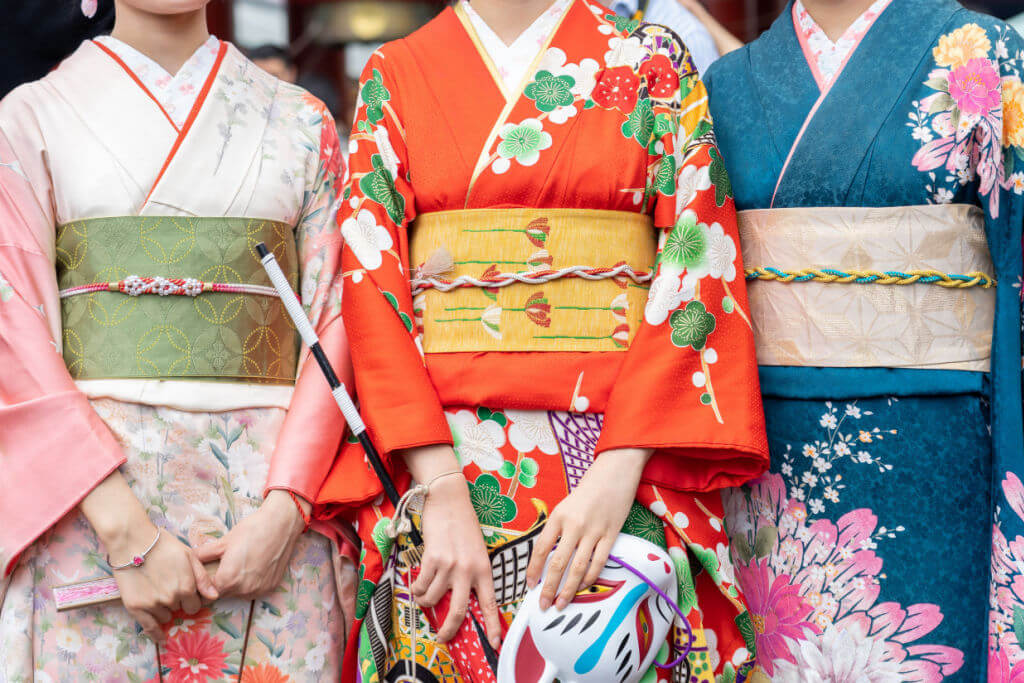
Tomesode in Kyoto Ceremonies

Kyoto, being the heart of Japanese tradition, is the ideal place to see and wear tomesode. Common occasions include:
Weddings:
Mothers of the bride and groom often wear kurotomesode.
Tea Ceremonies:
Irotomesode is appropriate for high-class formal tea gatherings.
Official Receptions:
Embassies, award ceremonies, and cultural events often feature women in tomesode.
For visitors, renting a kimono in Kyoto is a chance to experience this beauty firsthand. Imagine walking through Gion, Kyoto’s geisha district, or visiting Kiyomizudera Temple in a traditional tomesode—it’s a memory that lasts forever.
Why Tomesode is Still Relevant Today
Despite modern fashion trends, tomesode remains relevant because:
Tradition
It represents respect for tradition.
Elegance
It enhances the formal atmosphere of ceremonies.
Heritage
It connects younger generations with Japanese heritage.
In Kyoto, especially, tomesode rental is popular for visitors who want to look elegant in photos while exploring temples, shrines, and traditional streets.
How to Experience Tomesode in Kyoto
If you are planning a trip to Kyoto, consider renting a tomesode for a unique cultural experience.
At All Photos Kyoto, we provide:
- A wide selection of formal tomesode for ceremonies.
- Professional assistance in dressing.
- Photography opportunities in Kyoto’s most scenic locations.
This is more than just wearing a kimono—it’s about living a cultural experience you will never forget.
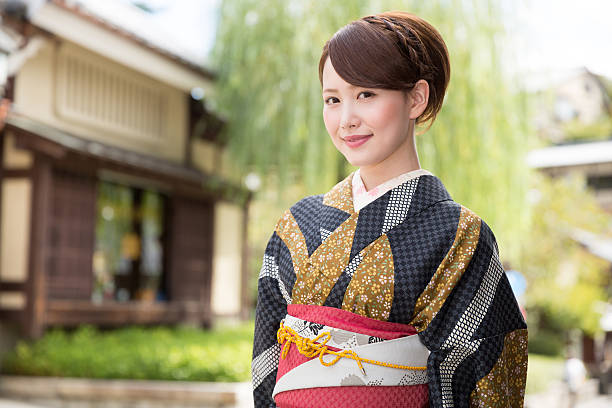
Conclusion
The tomesode is not just a garment—it is a symbol of tradition, respect, and elegance. Worn in formal ceremonies in Kyoto, it represents the continuity of Japanese culture and aesthetics.
For travelers, renting a tomesode is a chance to step into history and feel the refined beauty of Kyoto. Whether for a wedding, a tea ceremony, or simply a cultural adventure, the tomesode remains one of the most iconic expressions of Japanese tradition.


コメント